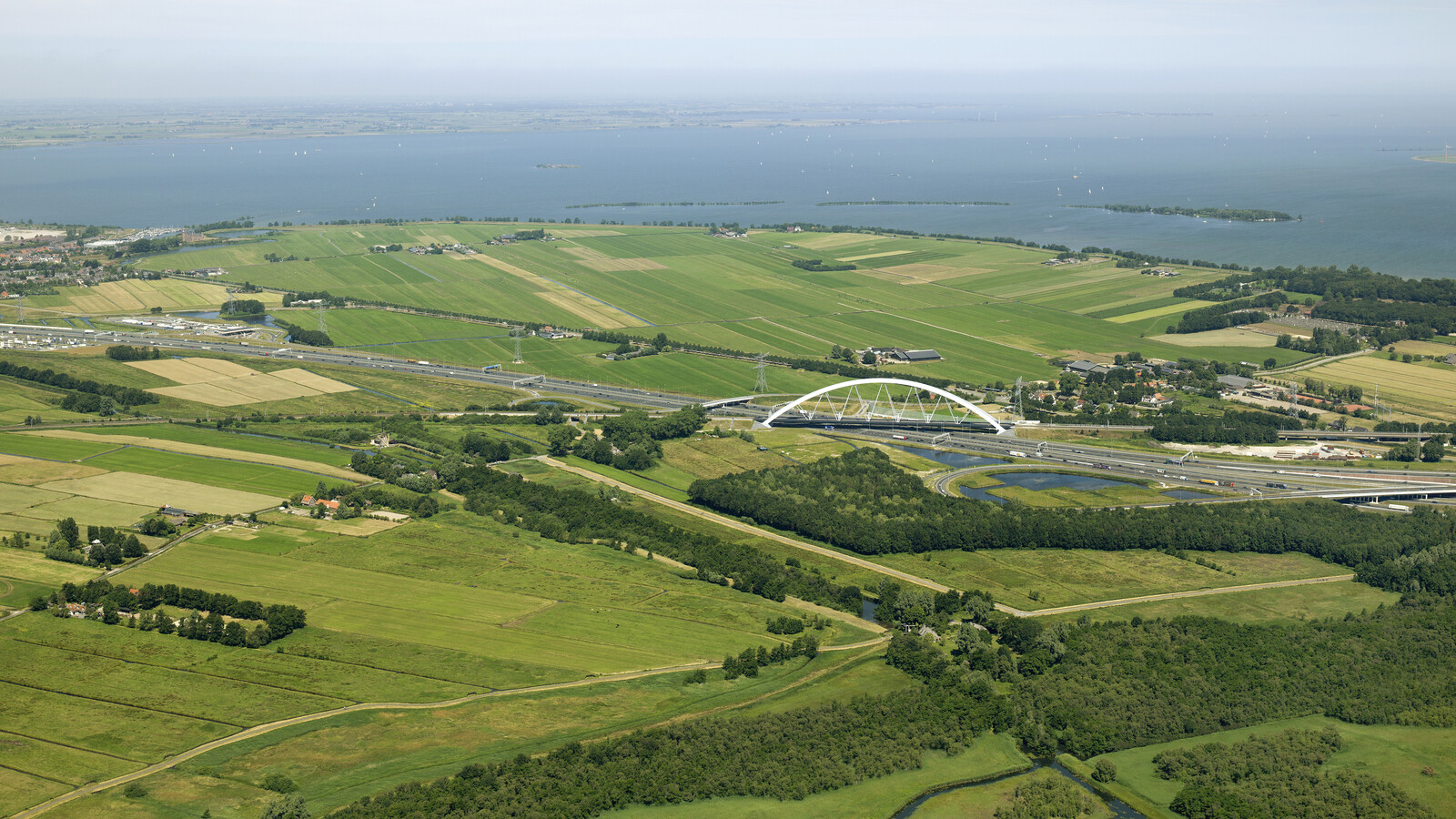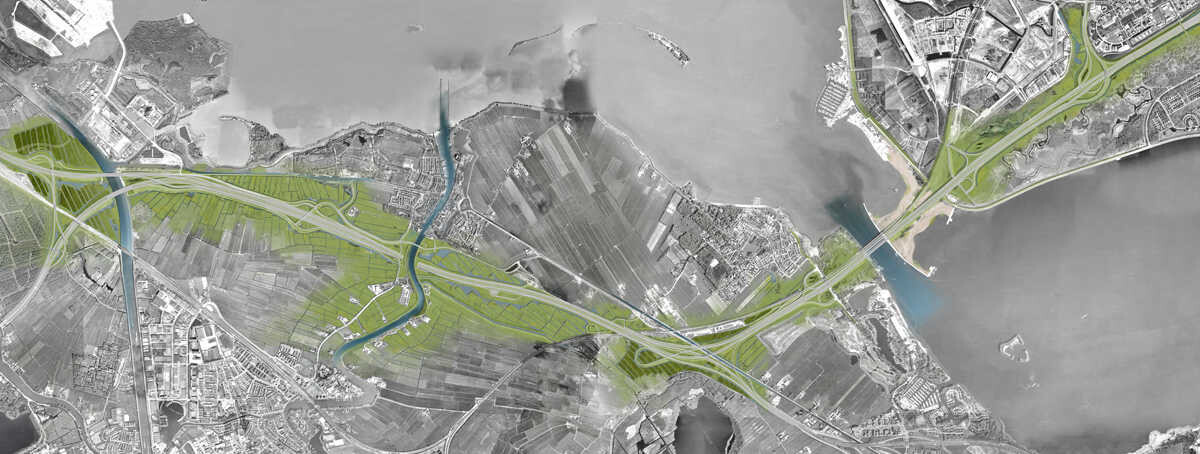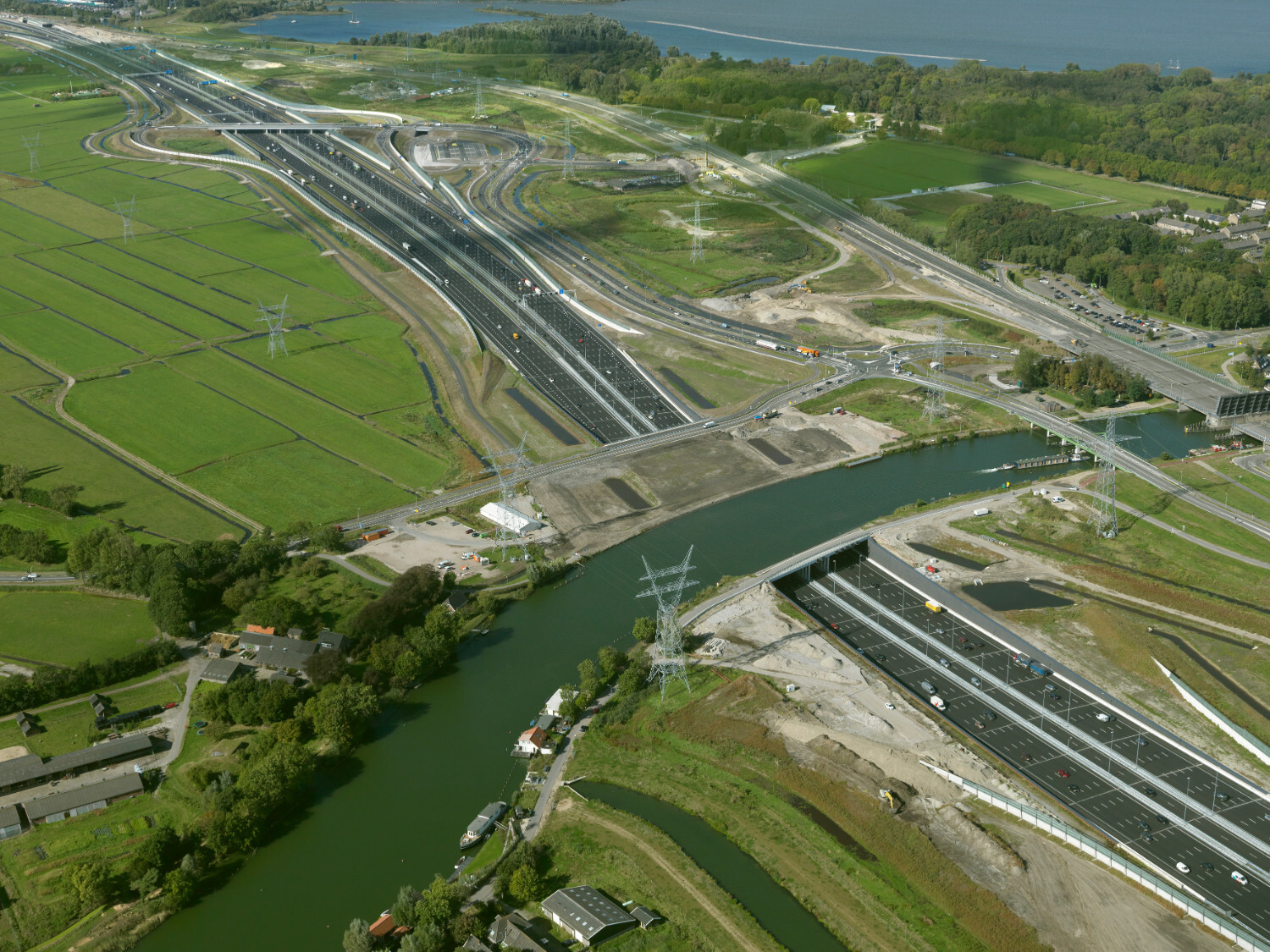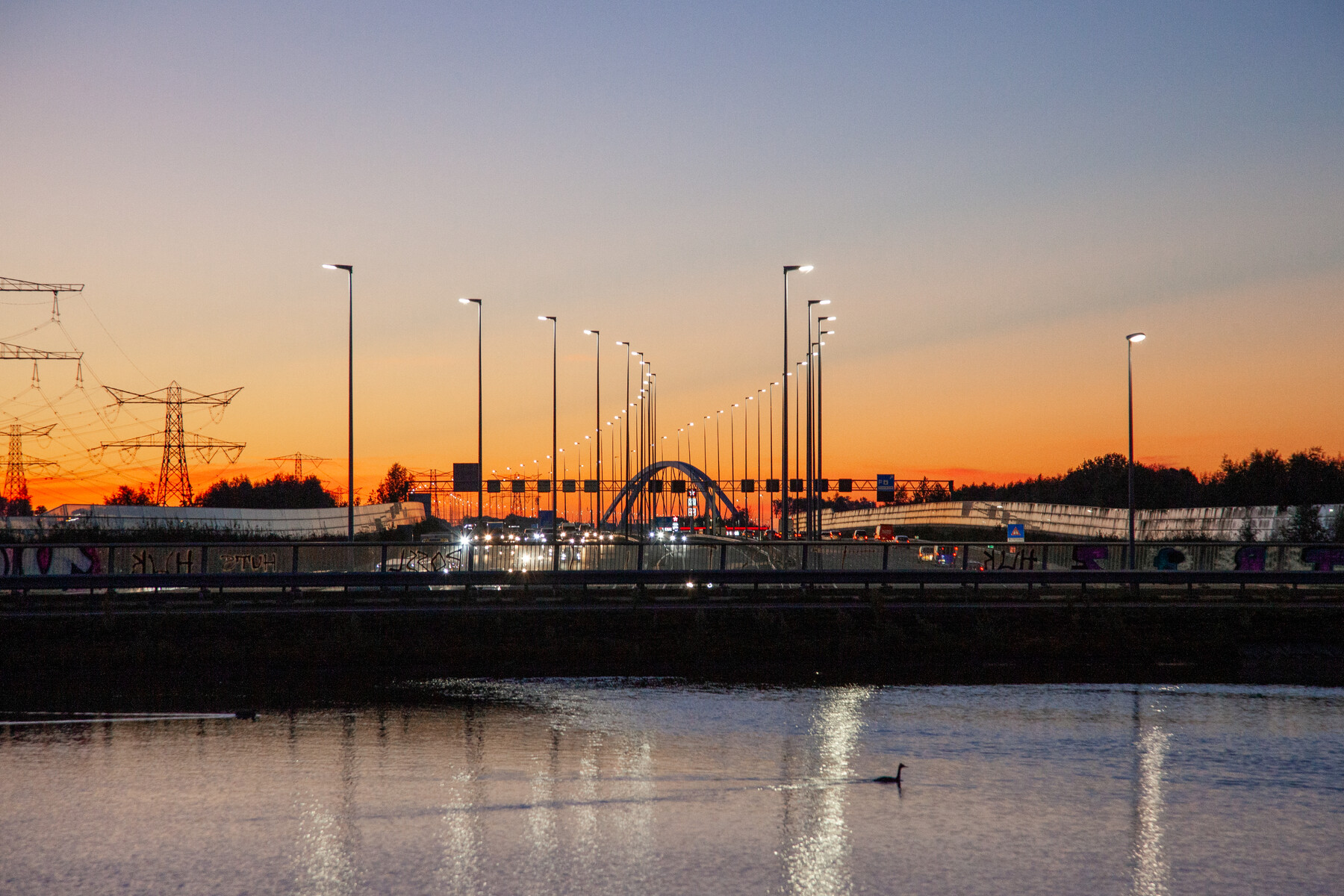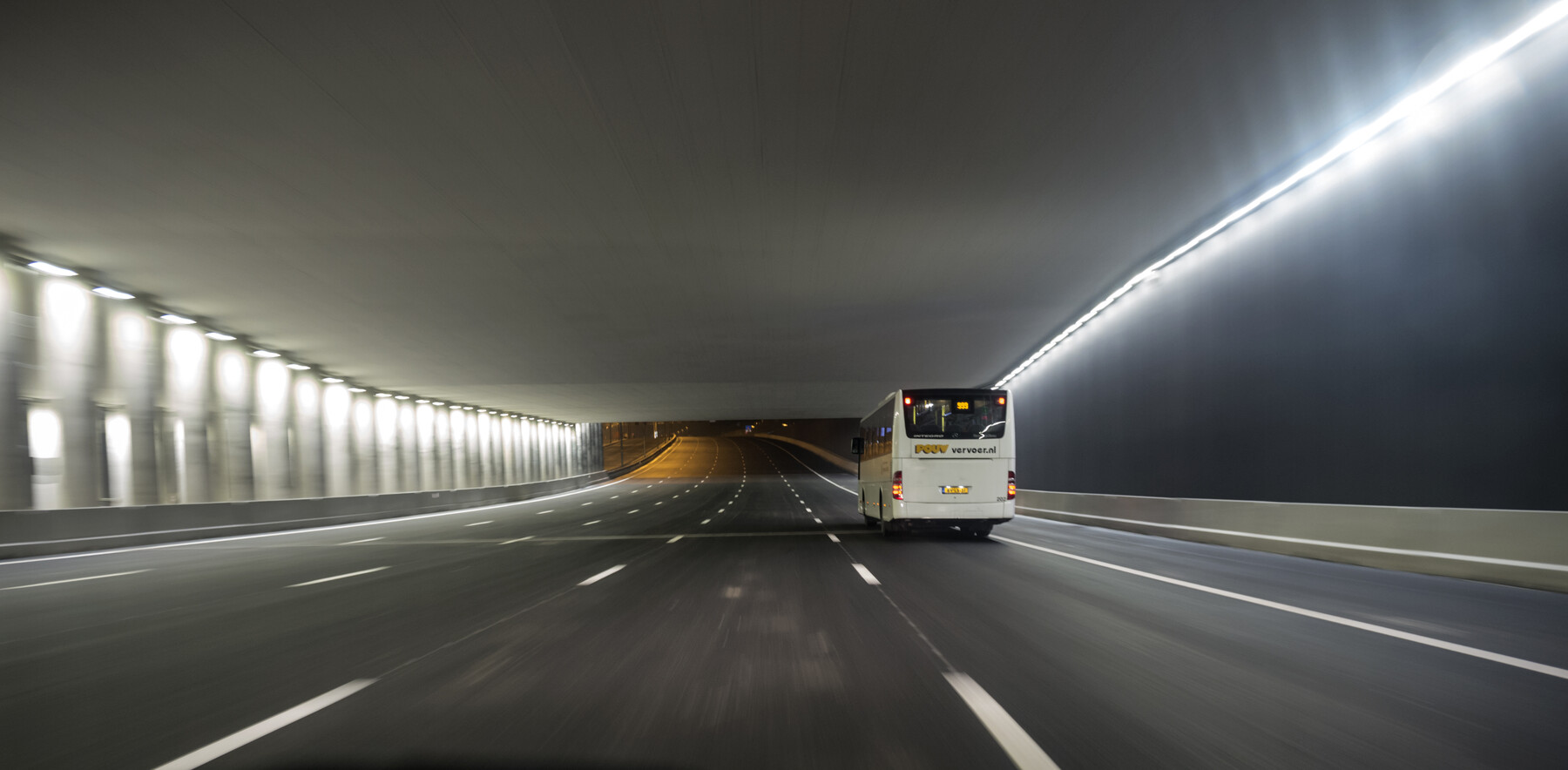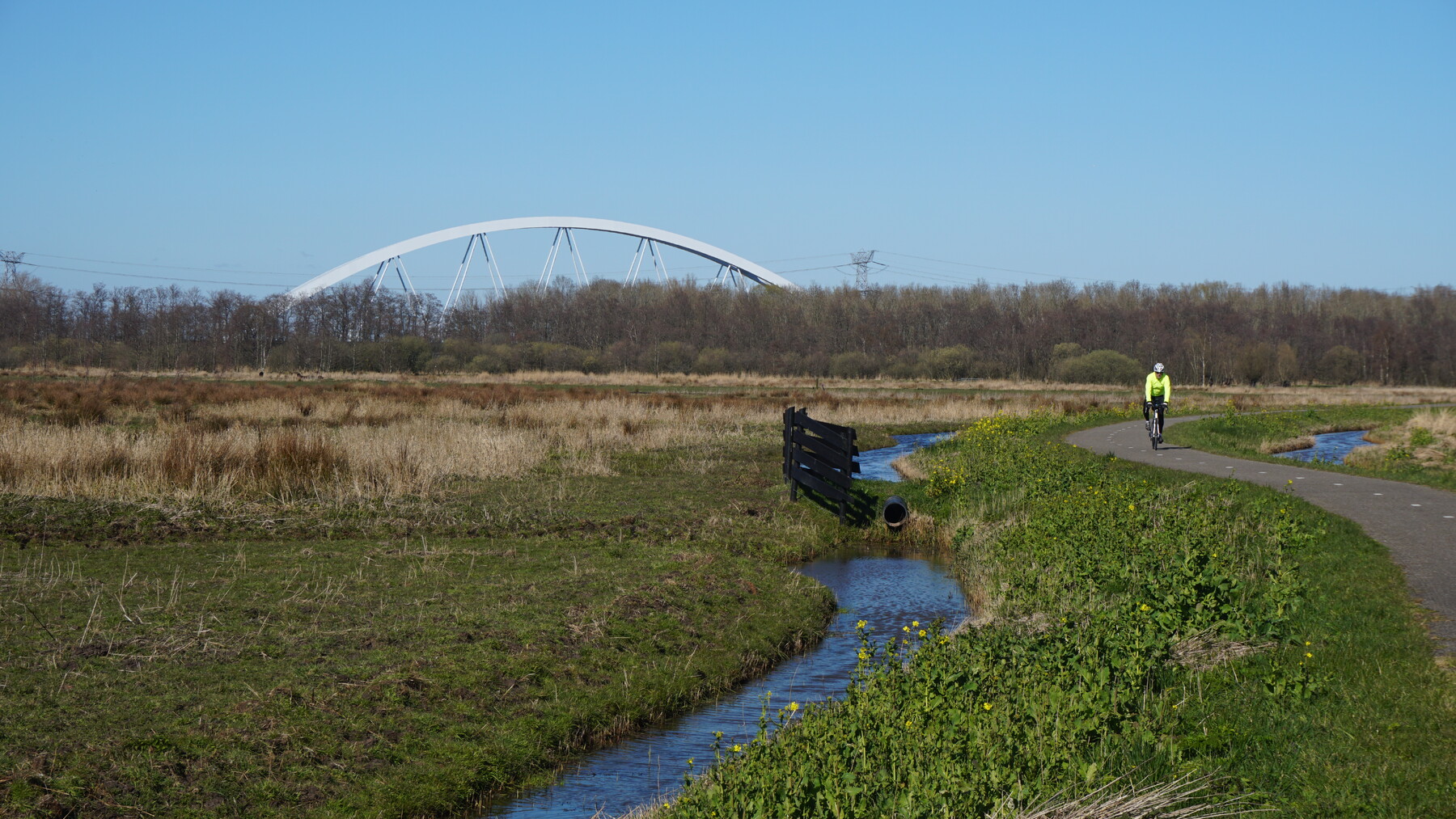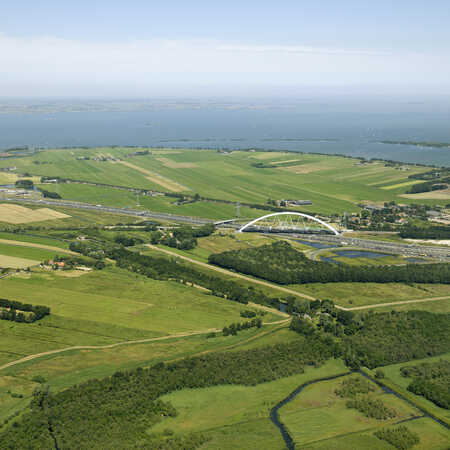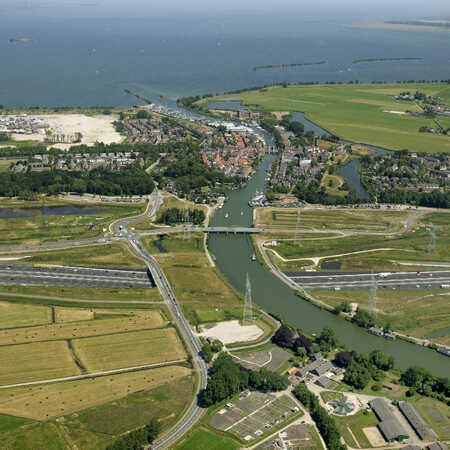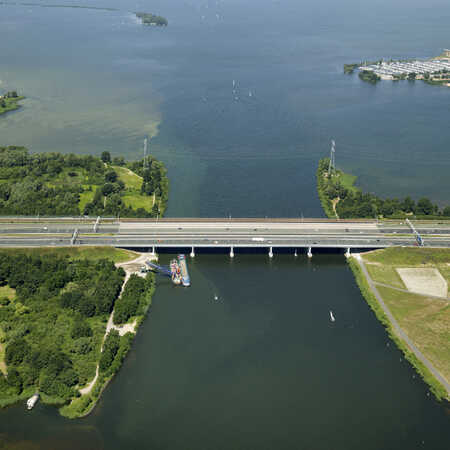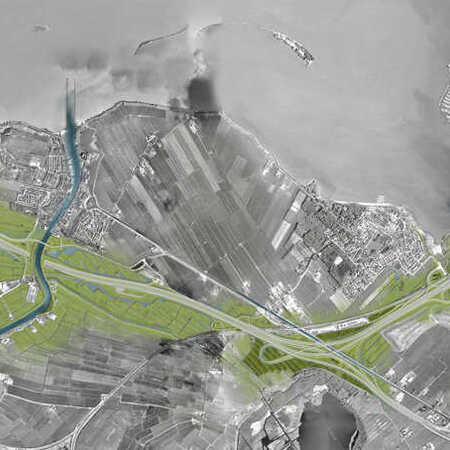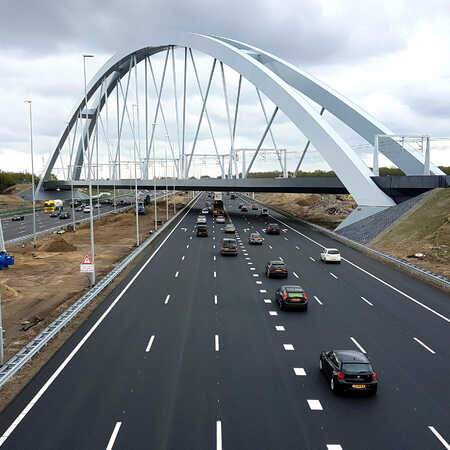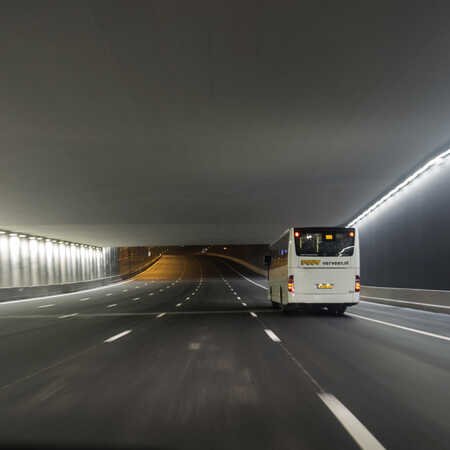This complex infrastructural landscape is part of a larger project to improve the connection between Schiphol, Amsterdam and Almere and prepare it for the future. In collaboration with OKRA Landscape Architects, architects ZJA delivered the design for this section of the project that covers an area where highways also intersect residential, business and recreational areas. One of the particulars of this extraordinary vast project is that from day one, when the first analysis of the requirements and the preliminary design were made, a close and collective collaboration of architects, engineers, analysts, builders and principals was formed to ensure a progressive, step by step fine tuning of all the plans, requirements and procedures. This renewed part of the Netherlands is not only a triumph in terms inventive engineering and design, but also exemplary proof of the efficiency and intelligence of the Dutch culture of consultation. Even the most complex and most ambitious elements of the project were finished well within the required time frame.
Visual relaxation
The motorist driving in this area is confronted with an excess of exits and merging lanes, junctions, bridges and underpasses. In combination with the many lanes and the intensity of the traffic this is quite an assault on the senses. The most important design decision is therefore to choose for modest and uniform shapes, with simple and recurring elements. The more chance one’s eyes get to wander into the distance and experience the alternating landscape, the better.
There are two bridges along the route that enhance the road’s capacity in a way too that supports experiencing the landscape. The first one is the new bridge across the Amsterdam-Rijn Canal. Three separate decks curve across the water. And big as this concrete bridge might be, in its shape, color and the rhythm of its pillars it shows a family resemblance with the existing bicycle bridge. The abutments and banks are fully integrated into the green landscape that the canal transverses.
The second bridge with an added landscaping element adds four lanes on a separate deck across the IJ-lake right alongside the existing Holland Bridge. The new bridge is less elevated, to keep the view from the existing bridge intact. The areas on either side of the bridge are being reconfigured with fly overs, wider and more diverse green zones and bicycle tunnels, to make the passage from the old land to the regained land, from the closed and fragmented to the open and wide landscape more efficient and a fuller experience for motorists, cyclists and hikers.
The bend in the river
Along this vast and complex stretch of new infrastructure two highlights are to be found when considering design, engineering and integration into the landscape. These are the aquaduct under the river Vecht and the arched railway bridge at Muiderberg.
The river Vecht has its own landscape, quite distinct from the polders around it. The A1 motorway does not cross an abstract body of water, but a segment of fluvial landscape, with the design of the aquaduct aiming to amplify this experience. The banks of the river, overgrown with alder, willow, birch and poplar trees, are left wide making sound barriers superfluous.
Most technical details (ducting, wiring, lighting, cameras) are built-in so that nothing about the aquaduct distracts from the special experience of dashing underneath a river with wide greens banks, together with a dike and a country road along side it. The sense of wonder about this seemingly effortless technical tour de force is complemented with the view of a segment of pristine river landscape, laying itself down in a slight curve.
The floating railway bridge
The second highlight is the arched railway bridge at Muiderberg, nicknamed the Zandhazenbrug, towering high above the landscape. It offers a striking sight. Ordinarily railway bridges span rivers, bays or ravines. At a sharp angle (27 degrees) this slender arched bridge cuts across a 225-meter wide stream of traffic with sixteen lanes. This makes this bridge the largest in its kind in the Netherlands. The design anticipates the addition of extra lanes in the future. The bridge appears open and slender, and surprisingly light in its construction, as if it floats above the landscape. The appearance is partly optical, caused by the shape and angle of the arches together with their color that contrasts with the deck. But is also the result of an astonishing piece of engineering by applying a special high strength type of steel and a limited amount of connections. When driving a hundred kilometers per hour toward this bridge while at the same time a brightly colored train shoots across it, one gets a visual and dynamic spatial experience of monumental quality.
Awards: The Zandhazenbrug, railway bridge, Muiderberg Dutch Steel Award 2018
Architect: ZJA
Principal: The Dutch Road and Transport Authority
Contractor: SAAone (VolkerWessels, Boskalis, HOCHTIEF, DIF)
Landscape architect: OKRA Landschapsarchitecten
Year: 2017
Project: #686
Photographs: The Dutch Road and Transport Authority, Dutch Road Movies
Related
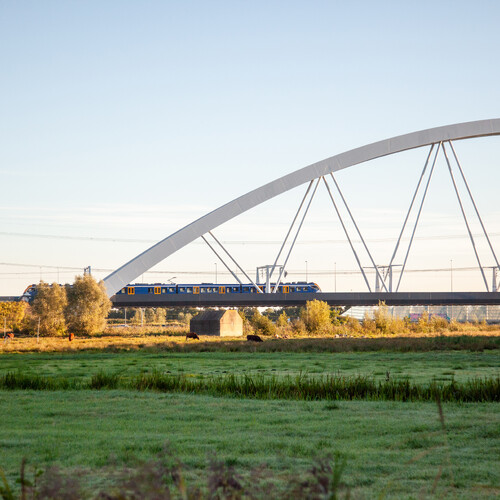
Improving infrastructure while reinforcing ecological values
Road expansion A1/A6 Diemen – Almere Havendreef
ZJA was involved as an architect in one of the largest infrastructure projects in the Netherlands, known as the SAA project (Schiphol
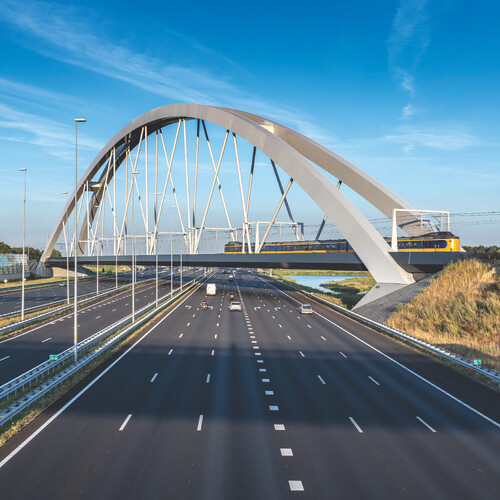

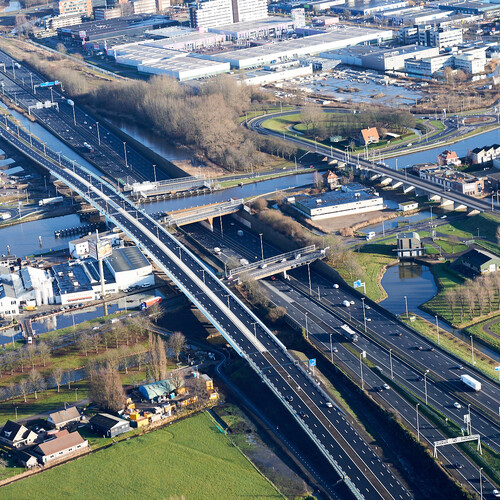
A12 Parallelstructuur
One of the largest moveable bridges in the Netherlands, the Amaliabridge, with a span of 25 meters, is built right next to the Gouwe…
